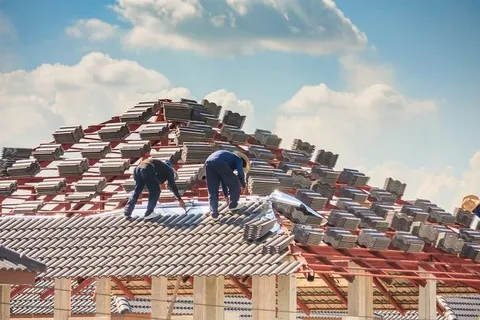How to Know When It's Time to Replace Your Roof? Key Signs & Tips

Your roof is your home's first line of defense against the elements. Over time, wear and tear can compromise its integrity, leading to potential damage inside your home. Recognizing the signs of a failing roof early can save you from expensive roof repairs down the line. In this guide, we'll walk you through the key indicators that suggest it's time to consider a roof replacement.
1. Age of Your Roof
Most roofing materials have a defined lifespan. For instance
-
Asphalt Shingles: 20–30 years
-
Wood Shingles: 20–25 years
-
Metal Roofs: 40–70 years
-
Clay Tiles: 50–100 years
If your roof is approaching or has surpassed its expected lifespan, it's wise to schedule an inspection to assess its condition.
2. Curling or Missing Shingles
Shingles that are curling, buckling, or missing entirely are clear indicators of roof deterioration. Such issues can expose your home to water infiltration, leading to mold growth and structural damage.
3. Granules in the Gutters
Asphalt shingles shed granules as they age. If you notice an accumulation of granules in your gutters, it's a sign that your shingles are breaking down and may need replacement.
4. Daylight Through Roof Boards
If you can see sunlight streaming through the roof boards in your attic, it's a clear sign of holes or cracks. This not only allows light in but also moisture, which can lead to further damage.
5. Sagging Roof
A sagging roof is often a sign of structural issues, possibly due to prolonged water damage or inadequate support. This is a serious concern that requires immediate attention.
6. Water Damage or Leaks
Stains on your ceilings or walls, or active leaks during rainstorms, indicate that your roof's protective barrier has been compromised. Addressing these issues promptly can prevent more extensive damage.
7. Moss and Algae Growth
While moss and algae might seem like mere cosmetic issues, they can trap moisture against the roof surface, leading to damage over time. Regular cleaning can help, but persistent growth may necessitate a roof replacement.
8. Rising Energy Bills
An inefficient roof can allow heat to escape during winter and let it in during summer, causing your HVAC system to work harder. If you've noticed a spike in your energy bills, your roof might be the culprit.
9. Storm Damage
Severe weather events, like hailstorms or hurricanes, can cause immediate and visible damage to your roof. After such events, it's crucial to have your roof inspected for potential issues.
10. Neighborhood Roof Replacements
If many of your neighbors are replacing their roofs, especially if homes were built around the same time, it might be a sign that yours is due for an upgrade as well.
Conclusion
Regular inspections and maintenance can extend the life of your roof, but recognizing when it's time for a replacement is crucial. If you've observed any of the signs mentioned above, it's advisable to consult with a professional roofing contractor. At Weatherproofing Roofing, we offer comprehensive roof assessments to help you make informed decisions about your home's safety and comfort.
FAQs
1. How do I know if my roof needs to be replaced or just repaired?
If your roof has isolated damage like a few missing shingles, a repair may be enough. However, if it's over 20 years old, has widespread damage, or repeated leaks, a full replacement is often the better option.
2. What is the average lifespan of a roof?
It depends on the material. Asphalt shingles typically last 20–30 years, metal roofs can last 40–70 years, and clay tiles may last over 50 years with proper maintenance.
3. Can a new roof improve my home’s energy efficiency?
Yes. Modern roofing materials offer better insulation and reflectivity, which can reduce heating and cooling costs and improve indoor comfort.
4. How long does it take to replace a roof?
Most residential roof replacements take 1 to 3 days, depending on the size of the home, type of roofing material, and weather conditions.
5. Will my homeowner's insurance cover roof replacement?
It depends on the cause of the damage. Insurance often covers damage from storms or unexpected events, but not from normal wear and tear or neglect. Always check your policy or ask your provider.
- Information Technology
- Office Equipment and Supplies
- Cars and Trucks
- Persons
- Books and Authors
- Tutorials
- Art
- Causes
- Crafts
- Dance
- Drinks
- Film
- Fitness
- Food
- Игры
- Gardening
- Health
- Главная
- Literature
- Music
- Networking
- Другое
- Party
- Religion
- Shopping
- Sports
- Theater
- Wellness



